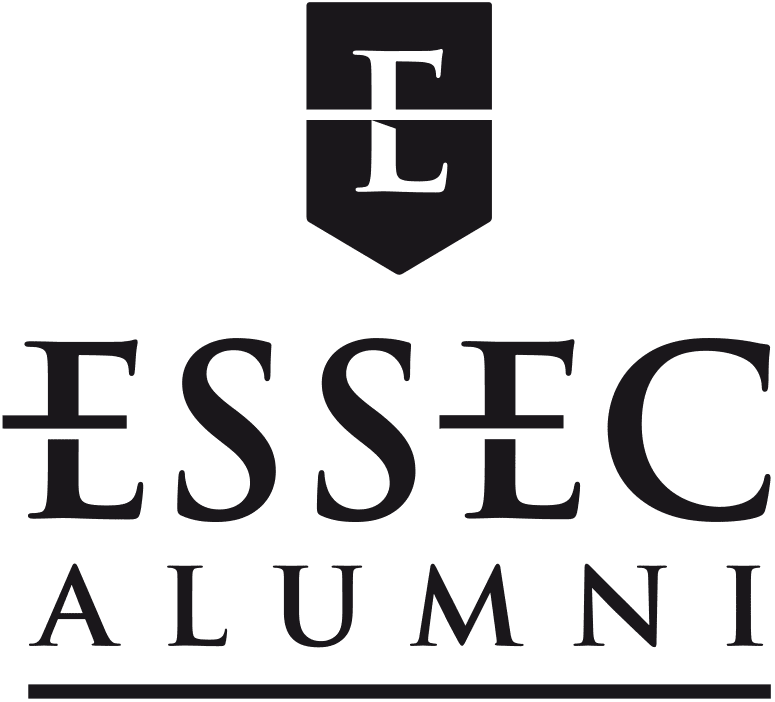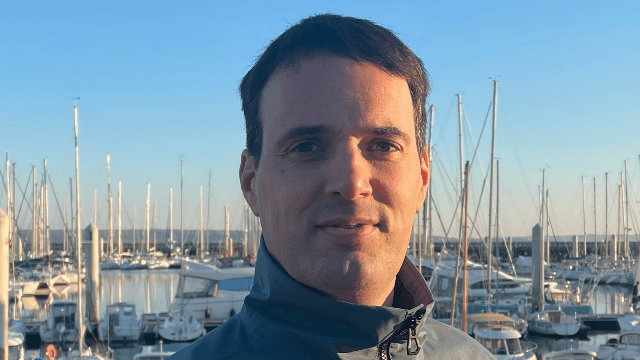Jean-Pierre Blin (EXEC MBA 12): “We Organise Scientific Sailing Missions To Protect the Ocean”
A consultant on dry land and an oceanographer at sea; such is the double life of Jean-Pierre Blin (EXEC MBA 12). Alongside his banking duties, he organises scientific maritime expeditions with his company Blue Observer.
ESSEC Alumni: How did Blue Observer come about?
Jean-Pierre Blin: It all started with a dual realisation. Firstly, that racing yachts are underused outside of the competition season. Secondly, that oceanographic missions depend either on dedicated fleets requiring a significant preparation phase, or on non-specialised boats which are equipped periodically. Both these alternatives raise issues of versatility and cost, and are generally powered by a motor, which not only impacts the environment, but also generates sound pollution that complicates certain experiments, observations or collecting activities. So this is where the idea to convert former yachts for scientific maritime missions came from.
EA: What were the steps in the development of your project?
J.-P. Blin: We began by launching the Iodysseus endowment fund, dedicated to research on plankton and plankton blooms. After a few years, this research was recognised by the United Nations as an ocean science programme for sustainable development. This initial experience confirmed the relevance of the concept. We then acquired a relatively famous yacht, a record-holder for circumnavigation against prevailing winds, which was adapted to our needs thanks to its speed, low carbon impact and the required payload capacity for scientific equipment, at a cost of up to 20 times less than that of a motor boat. That’s how Blue Observer came to be.
EA: What activities are you carrying out right now?
J.-P. Blin: We hope to contribute to the understanding and protection of the seas, as well as the development of sustainable blue growth. To this end, we’re putting together a team of experts in oceanography, microbiology and instrumentation to carry out missions involving sample and data collection, the deployment of tools and observation. We also have a communication unit with an on-board “media man” who can create video and photo content when the missions entrusted to us include communication aspects.
EA: Who commissions your expeditions?
J.-P. Blin: As a maritime operator, we generally respond to requests from public or private research bodies. We’re also developing our own R&D, however, and we sometimes carry out co-development actions. For example, we’re currently working with the Roscoff Biological Station to set up a stem library of marine aerosols which will become a world reference in marine microbiology. In addition to that, we provide a drafting service for CSR programmes around great whales, for companies wishing to get involved in ocean protection via partnerships.
EA: What is your budgetary model?
J.-P. Blin: Our model is based on pooling; we catalyse and aggregate the needs of various players, which allows us to maximise the means and the number of days at sea they can make use of. For instance, the Clermont Auvergne CNRS and Laval University in Canada were lacking in means for a 20-day study in the North Atlantic. We made this possible by pooling the navigation days they needed with a mission to deploy Argo floats. In a similar way, we often put the companies who call on us to develop CSR programmes in contact with our research and funding partners for their projects.
EA: Who are your partners?
J.-P. Blin: On the institutional side, we fly the flags of Ocean OPS, the World Meteorological Organization UNESCO, Ocean Decade and the UN. On the corporate side, we work mainly with Cegelec, Axciss and the LRJ group. We are actively supported by the City of Brest and the Brittany regional authorities. For the instrumentation aspect, we work with key North-American players, including the Woods Hole Oceanographic Institution, the NOAA and Argo Canada, in addition to European bodies such as Euro Argo and Météo France [French Meteorological Organisation]. For the microbiology aspect, we work alongside the Roscoff Biological Station and Clermont Auvergne CNRS.
EA: What has been your most memorable expedition?
J.-P. Blin: In March, we will have completed our first expedition of over 100 days at sea, from Brest and the North Atlantic to Saint Helen’s Island and along the African continent. There are several aims to this expedition. The first is to deploy 95 Argo floats, which play a key role in weather and climate forecasting. The second aim is to collect a wide range of samples, especially aerosols, in order to further our knowledge of plankton DNA, which remains limited despite 13 Nobel prizes for medicine related to marine production! Thirdly, we want to test a protocol developed with the Woods Hole Oceanographic Institution for the observation of great whales, designed to gain better insight into their role in carbon capturing and the rise in fish stocks. This is a highly strategic project, given that certain IMF economists claim that whales could contribute to world ecosystem services to the amount of $2 million per head.
EA: What are your medium to long-term prospects?
J.-P. Blin: We’re trying to develop the sustainability of the structure around 3 focus points. Firstly, to boost our role as a maritime operator, which implies the expansion of our fleet. Next, to develop in-house or partnership innovations, somewhere along the lines of a specialised start-up studio; this is taking shape with the stem library or our 3R project (for Recovery, Recycle and Repair), which aims to provide a circular operating model for our boats. Lastly, to build effective new CSR programmes around the sea, because we firmly believe that the protection of maritime environments is not just a matter of carbon compensation and reduction, it also involves understanding and education.
EA: How can alumni support your activities?
J.-P. Blin: Spread the word about our actions, help us to create links with potentially interested R&D or CSR teams, and so on. This concerns everyone; you must remember that the ocean covers 70.8% of our planet’s surface, it absorbs 30% of our CO2 emissions, produces 50% of the oxygen we breathe and forms the main source of animal protein for a billion human beings. In addition to this, its economic impact is set to double by 2030. The challenge is huge...as is the potential!
Interview by Louis Armengaud Wurmser (E10), Content Manager at ESSEC Alumni
Want more content? Join us now so that we can keep bringing you news about the ESSEC network.

Comments0
Please log in to see or add a comment
Suggested Articles






